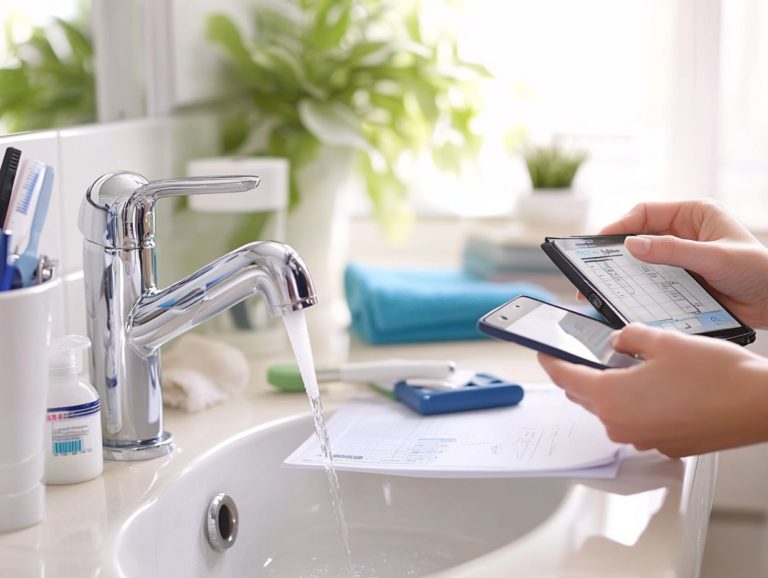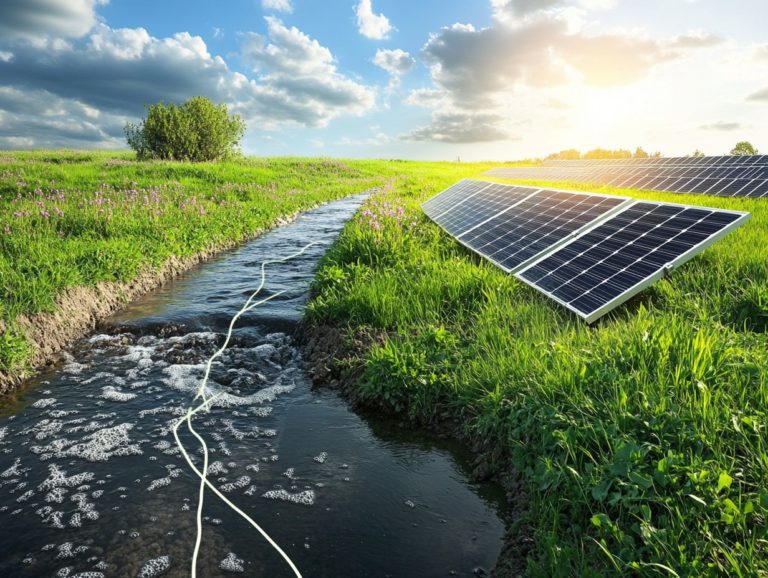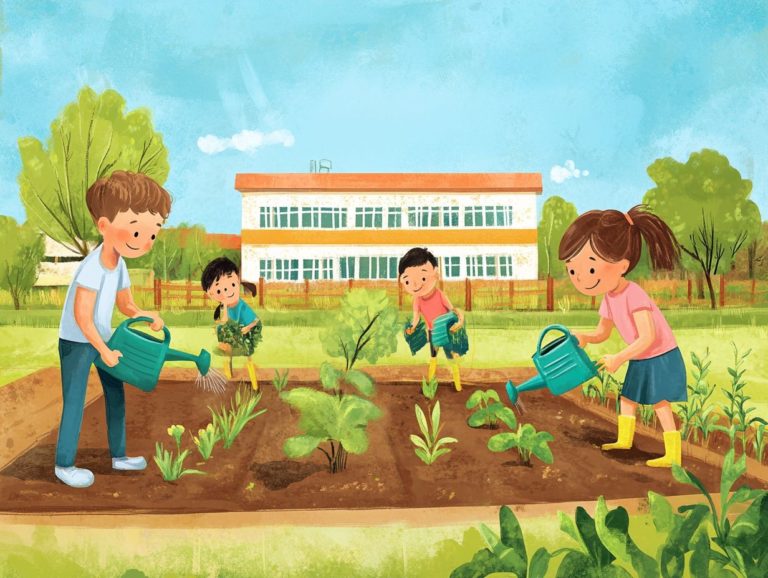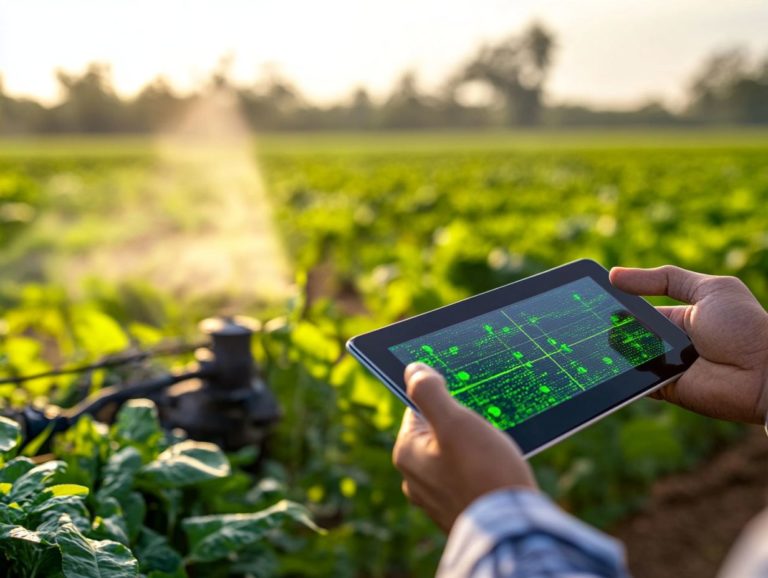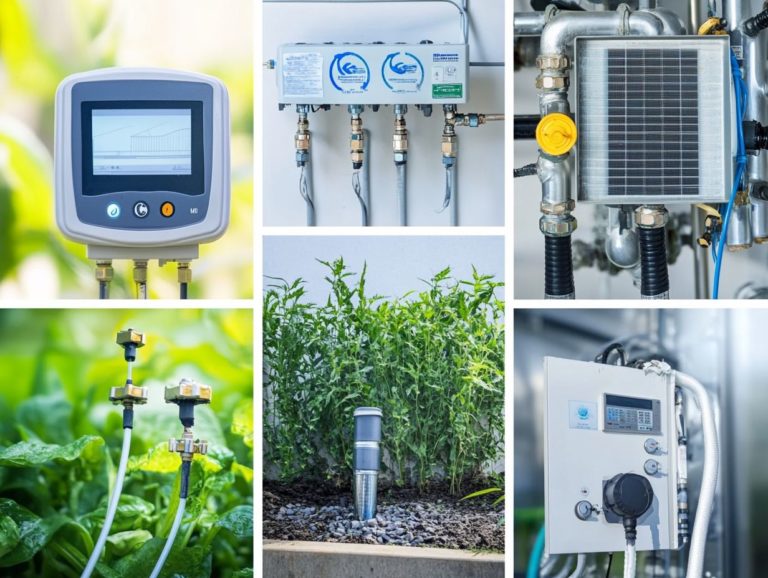5 Ways to Recycle Water at Home
Water is one of your most precious resources, and finding ways to recycle it at home can significantly benefit both your wallet and the environment. This article delves into five practical methods for reusing water from cooking, cleaning, and laundry. Whether you choose to install a greywater system or set up a simple DIY recycling setup, these strategies will help you conserve water and promote sustainability in your daily routine.
You ll discover the benefits of water recycling, potential risks involved, and essential tips for safe practices. Discover just how easy it is for you to make a meaningful difference!
Contents
- Key Takeaways:
- 1. Collect and Reuse Water from Cooking and Cleaning
- 2. Use a Rain Barrel to Collect Rainwater
- 3. Install a Greywater System
- 4. Reuse Water from Your Washing Machine
- 5. Create a DIY Water Recycling System
- What Are the Benefits of Recycling Water at Home?
- How Can Recycling Water Help the Environment?
- What Are the Different Types of Water Recycling Systems?
- What Are the Potential Risks of Home Water Recycling?
- How Can Homeowners Ensure the Safety of Recycled Water?
- What Are Some Tips for Conserving Water at Home?
- Frequently Asked Questions
- What are some ways to recycle water at home?
- How can using a rain barrel help recycle water at home?
- What is a greywater system and how does it contribute to water recycling at home?
- Can water from a composting toilet really be recycled?
- How does reusing cooking water contribute to water recycling at home?
- Is it safe to use water from dehumidifiers and air conditioners for other purposes?
Key Takeaways:
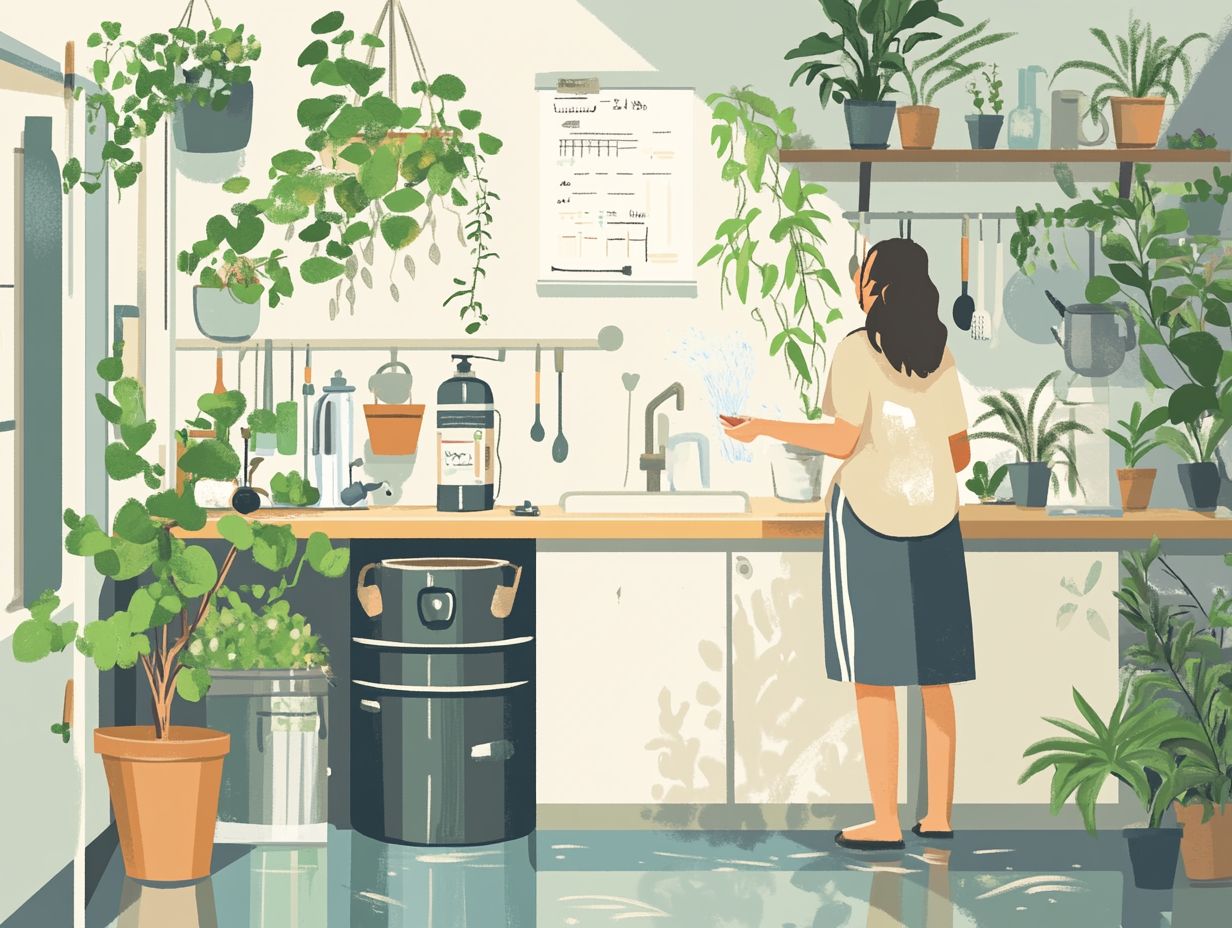
Reduce waste and save money by collecting and reusing water from cooking and cleaning. Utilize a rain barrel to collect rainwater for outdoor use such as gardening and washing cars. To learn more about making a real difference for the environment, check out this guide on how to implement a water conservation program at home by installing a greywater system to recycle water from sinks, showers, and washing machines.
1. Collect and Reuse Water from Cooking and Cleaning
Collecting and reusing water from cooking and cleaning is a smart and practical way for you to conserve water and reduce your impact on the environment. Remarkably, you can save about 50% of household water usage simply by adopting eco-friendly practices like reusing pasta water and shower water for irrigation or cleaning tasks.
For example, when you boil pasta, that starchy water doesn t have to go down the drain; it can become a nutrient-rich solution for your plants, providing essential carbohydrates that support their growth.
Instead of letting bath water disappear into the abyss, you can redirect it to refill your toilets or irrigate your garden, turning what would be waste into a valuable resource.
Statistics show that around 80 gallons of water per person are wasted each day due to conventional practices. This underscores the urgent need for innovative water management solutions. By embracing these small but impactful changes, you not only contribute to water conservation but also cultivate a sustainable lifestyle that will resonate for generations to come.
2. Use a Rain Barrel to Collect Rainwater
Installing a rain barrel for rainwater collection is an exceptional way for you to harness natural resources. This clever investment allows you to save water for irrigation, significantly reducing your water bills while actively contributing to a sustainable future.
By capturing runoff from your rooftop, these systems filter and store rainwater, which you can then use for various purposes, such as watering your garden, washing your car, or filling bird baths.
Rainwater harvesting not only conserves potable water but also eases the burden on local stormwater management systems, helping to mitigate flooding and erosion. Utilizing collected rainwater has a positive ripple effect on local ecosystems, promoting healthier plants and decreasing your reliance on municipal supplies.
By implementing such eco-friendly practices, you enhance biodiversity, support wildlife habitats, and reduce water pollution. This makes rain barrels a practical and responsible choice for anyone who values the environment.
3. Install a Greywater System
Installing a greywater system allows you to recycle water from sources like sinks, showers, and washing machines. This not only reduces water waste but also promotes efficient water management in your daily routine. Plus, it ensures that the water is treated appropriately for eco-friendly reuse.
The collected greywater wastewater from sinks and showers can be redirected for irrigation or toilet flushing after a simple filtration process. Common greywater sources include:
- Washing machines, whose water can be beneficial for garden plants depending on the detergent used.
- Shower water, which typically contains fewer contaminants, making it perfect for reuse.
By harnessing these water sources, you can experience significant environmental benefits, such as lower water bills and the conservation of potable water. Just remember to adhere to local regulations, as some areas may require permits and have specific installation standards to ensure public health safety.
Take charge today! Embrace these water recycling methods and make a meaningful impact on your environment. Together, we can create a more sustainable future.
4. Reuse Water from Your Washing Machine
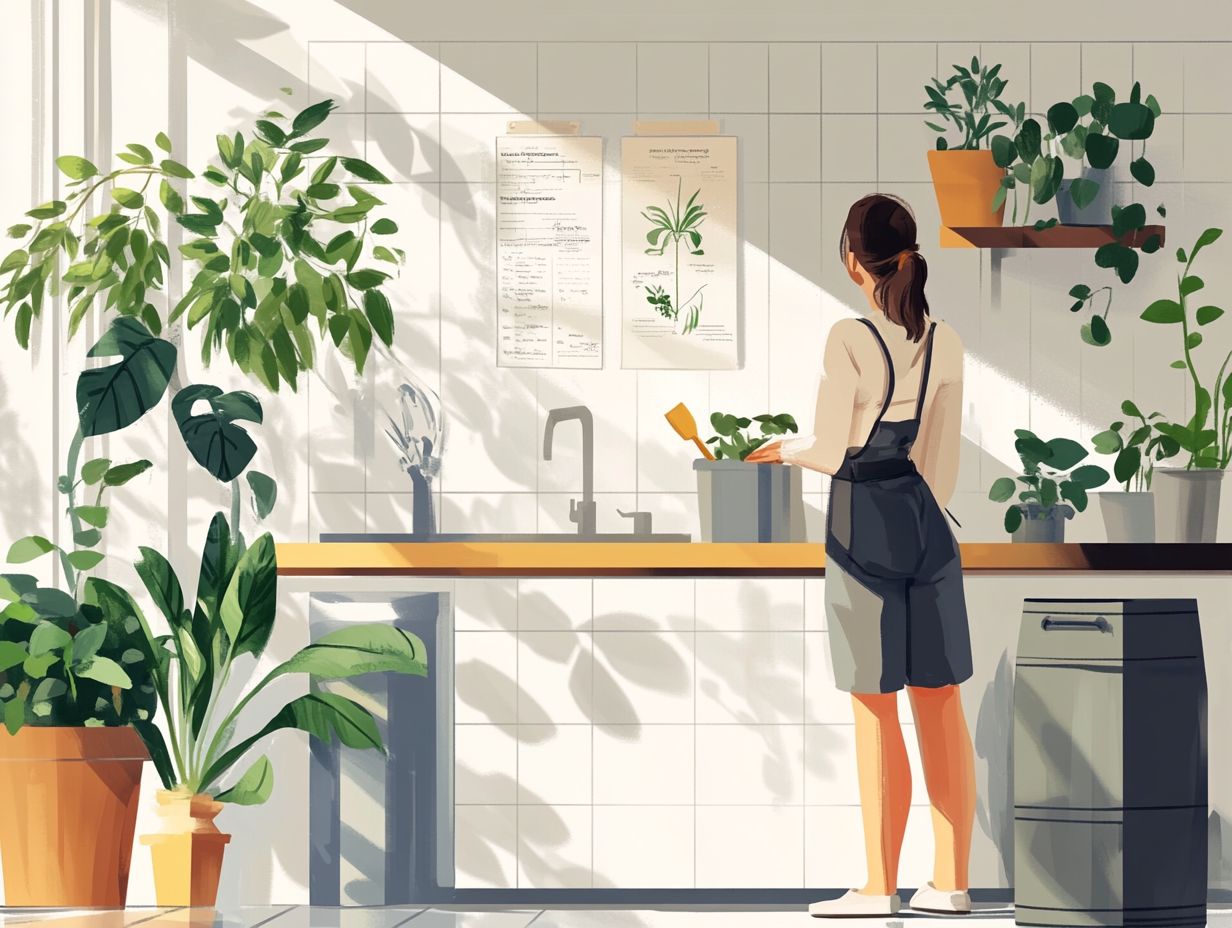
Reusing water from your washing machine offers a remarkable opportunity for you to embrace water-saving strategies. This practice saves a lot of water. It also reduces the burden on local water supply systems.
By redirecting this used water from your home to your garden or irrigation system, you can nourish your plants while effectively trimming your water bills. Implementing a simple diversion system makes this process seamless, ensuring that you make the most of your precious resources.
Using this method in your daily routine not only promotes a greener lifestyle but also elevates your awareness of broader water conservation efforts. This approach leads to financial savings and fosters sustainable practices that help protect the environment for generations to come.
5. Create a DIY Water Recycling System
Creating a DIY water recycling system enables you to implement eco-friendly practices with confidence, transforming graywater into reusable water through straightforward filtration methods and significantly reducing your ecological footprint.
By harnessing the everyday wastewater generated from sinks, showers, and laundry, you can dramatically lower your water consumption while conserving this invaluable resource.
To kick off this project, gather essential materials such as:
- a storage tank
- a filtration system
- hose connections
Techniques like sedimentation, sand filtration, and activated carbon can be utilized to purify the water before it s redirected for purposes like irrigation or toilet flushing.
This innovative approach reduces your reliance on city water supplies. It also encourages responsible, sustainable living, inspiring others to consider similar practices in their own homes.
What Are the Benefits of Recycling Water at Home?
Recycling water at home comes with amazing benefits! You can save money, reduce waste, and help the environment all at once. By exploring DIY projects for water conservation at home, you’ll enjoy significant reductions in your water bills, minimize waste, and contribute positively to the environment while championing sustainable living.
By embracing straightforward methods like rainwater harvesting, gray water reuse, and efficient irrigation techniques, you can effectively lower your monthly expenses while making conscious choices that support conservation efforts. This approach eases the burden on local water supplies while nurturing a sense of community responsibility.
As more households across America adopt these sustainable practices, they collectively foster a shift towards a more eco-friendly culture, heightening awareness about the critical need for water conservation in an age marked by climate change and increasing urbanization.
How Can Recycling Water Help the Environment?
Act now! Recycling water offers significant environmental benefits, from reducing water pollution to conserving natural resources and promoting the health of ecosystems.
This sustainable practice dramatically reduces the amount of wastewater flowing into local rivers and lakes often tainted with harmful chemicals. It helps preserve precious freshwater resources, which are increasingly threatened by overconsumption and climate change.
By effectively reusing water, you can help communities mitigate the detrimental impacts of industrial discharges on aquatic life, thus maintaining the delicate balance of local ecosystems.
Furthermore, by minimizing the need to extract new water sources, recycling plays an essential role in preventing habitat destruction, allowing both flora and fauna to flourish in their natural environments.
What Are the Different Types of Water Recycling Systems?
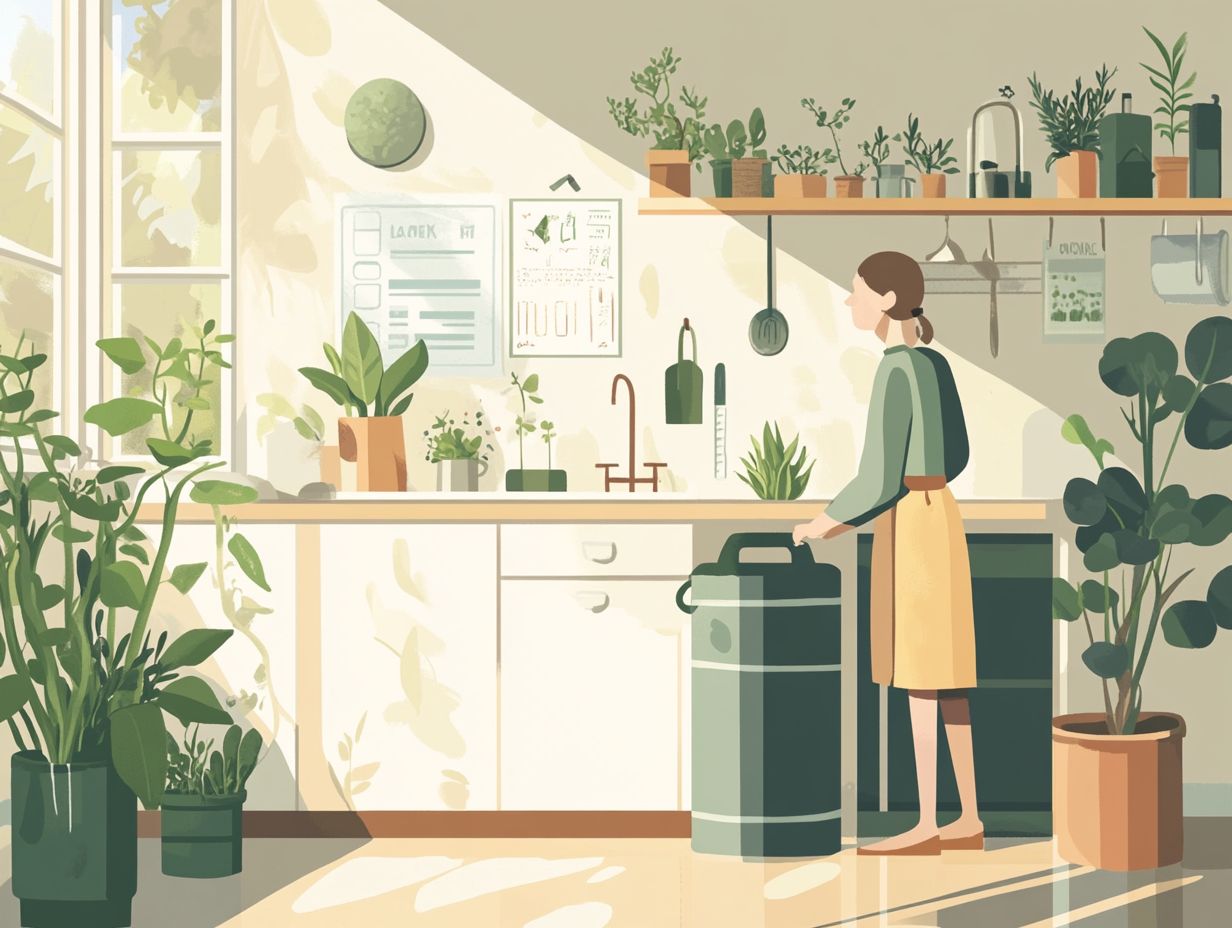
Various water recycling systems are available, each carefully made to treat and reuse different types of water. These include greywater systems and rainwater harvesting systems, as well as advanced treatment technologies that ensure safe reuse in households.
These systems are game changers for sustainability, especially in regions grappling with water scarcity. Greywater systems collect wastewater from baths, sinks, and washing machines, treating it through filtration and biological processes. This makes it suitable for irrigation and toilet flushing.
Rainwater harvesting systems capture precipitation and channel it into storage tanks. There, the water undergoes filtration before being used for non-potable purposes.
Advanced treatment technologies like membrane filtration and reverse osmosis improve the quality of recycled water, ensuring it meets health standards for various applications. Together, these systems conserve precious freshwater resources and promote responsible water management practices.
What Are the Potential Risks of Home Water Recycling?
While home water recycling offers many advantages, it also carries potential risks that you need to consider. These risks include contamination of reused water, inadequate treatment resulting in water pollution, and safety concerns that must be addressed to protect public health.
These challenges highlight the critical need for robust systems and strict regulations. Without proper filtration and sanitization, contaminants like bacteria, chemicals, and pathogens can easily infiltrate the recycled water supply, posing significant health risks.
A study by the National Academy of Sciences revealed that nearly 20% of home water recycling systems in certain regions experienced operational failures due to improper installation. This emphasizes the importance of professional oversight and regular maintenance.
Introducing gray water into your domestic water system requires effective backflow prevention to avoid accidental cross-contamination.
How Can Homeowners Ensure the Safety of Recycled Water?
Homeowners can secure the safety of recycled water by using proper treatment techniques, following local regulations, and adopting eco-friendly practices that minimize contamination risks.
To achieve this, prioritize advanced treatment methods such as filtration, disinfection, and reverse osmosis, which significantly reduce harmful microorganisms and pollutants.
Following installation best practices is essential. Properly designed and maintained recycled water systems help prevent potential cross-contamination.
Staying informed about local and state regulations regarding recycled water usage is vital. Compliance protects public health and promotes sustainable water management.
By educating yourself on these aspects, you can play a significant role in creating a safer and more responsible recycled water system.
What Are Some Tips for Conserving Water at Home?
- Take shorter showers and invest in water-efficient fixtures to reduce water usage.
- Use a basin for washing dishes instead of letting the water run to save gallons each time.
- Implement mulching techniques and drip irrigation systems in your garden to conserve water and reduce evaporation.
These mindful practices will ultimately lead to lower water bills while positively impacting local ecosystems, ensuring a healthier environment for generations to come.
Frequently Asked Questions
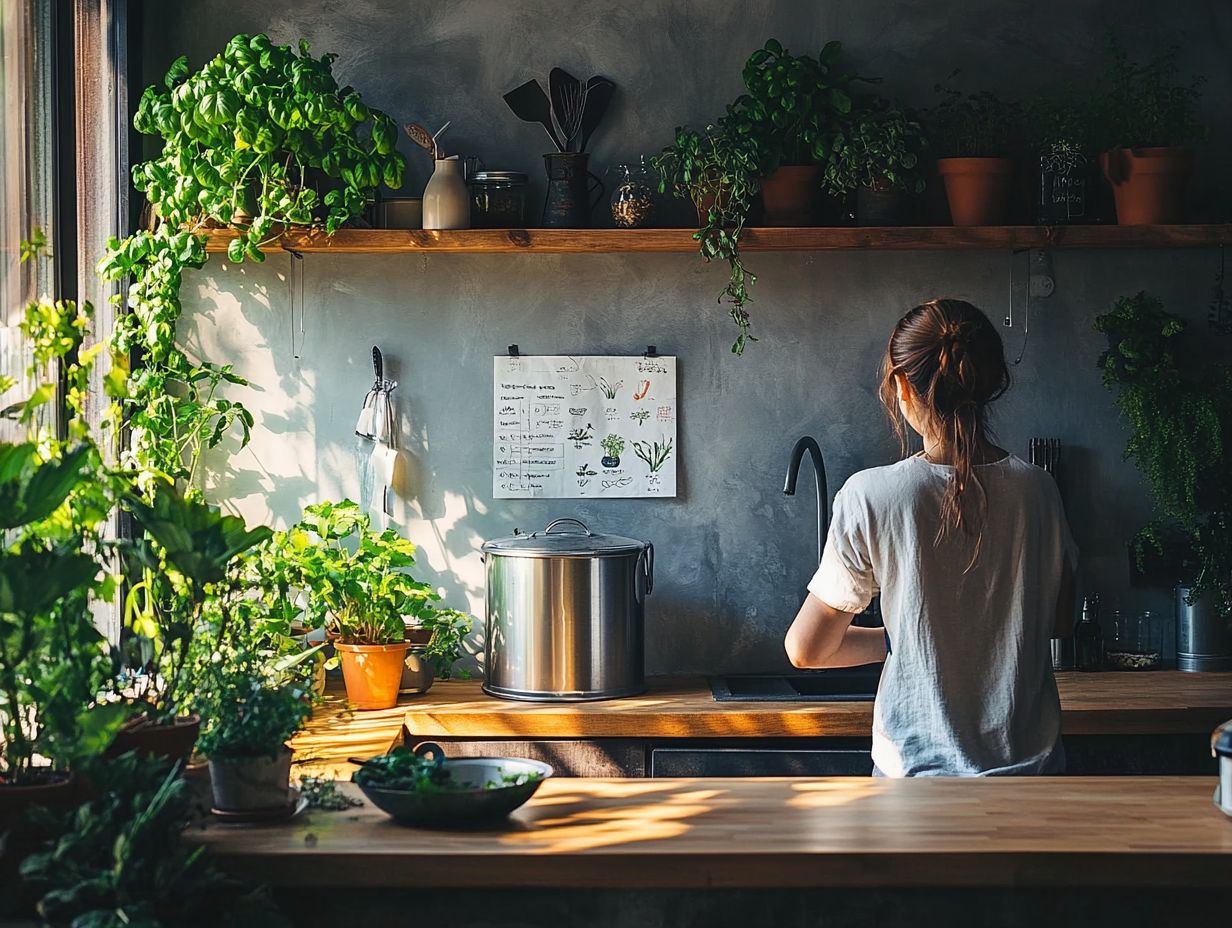
Implement these tips today and take a step towards a sustainable future!
What are some ways to recycle water at home?
1. Use a rain barrel to collect rainwater for watering plants and gardens. You’ll save water and help your garden thrive!
2. Install a greywater system. Greywater is the water from sinks, showers, and washing machines that you can reuse for irrigation.
3. Use a composting toilet to cut down on water use. It turns waste into fertilizer for plants.
4. Reuse cooking water. Instead of pouring it down the drain, use it to water plants or make delicious broth.
5. Collect water from dehumidifiers and air conditioners. This water is usually distilled and safe for cleaning or watering plants, and you can find 5 ways to reduce water waste during cooking to further enhance your water conservation efforts.
How can using a rain barrel help recycle water at home?
A rain barrel collects and stores rainwater for your plants and garden. This also cuts down on tap water usage.
What is a greywater system and how does it contribute to water recycling at home?
A greywater system gathers and treats water from sinks, showers, and washing machines. This makes it safe to reuse for irrigation, saving thousands of gallons of water each year.
Can water from a composting toilet really be recycled?
Yes! Water from a composting toilet can be safely used as fertilizer for plants. The toilet separates liquid and solid waste, allowing the liquid to be reused.
How does reusing cooking water contribute to water recycling at home?
Instead of pouring cooking water down the drain, collect it! You can use it to water plants or as a flavorful broth.
Is it safe to use water from dehumidifiers and air conditioners for other purposes?
Yes, this water is typically distilled and free from contaminants, making it safe for cleaning or watering plants. It helps reduce tap water usage for these tasks.


